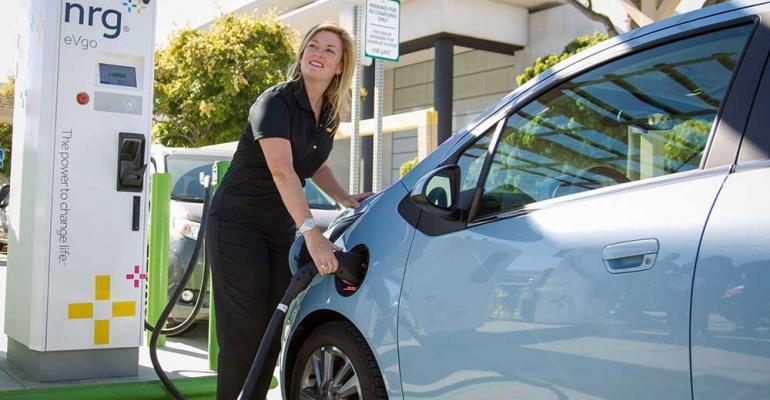PALO ALTO, CA – In the 1880s, horses provided the main source of transportation, and the equivalent of today's tailpipe emissions wasn’t pretty.
Stepping outdoors in a place like New York City back then, the first thing that would hit a person was the smell from tons of horse manure on the streets. It didn’t just offend olfactory senses. It served as a breeding ground for horseflies that spread bacterial illnesses.
Describing those bygone conditions to make a point is Mercedes-Benz USA spokesman Christian Bokich. His company traces its roots to the first gasoline-powered car. Karl Benz invented it in 1885.
For Bokich, the irony is that late-19th century society hailed the advent of the internal-combustion car as both an environmental and technical breakthrough.
“It was seen as something that was better for the environment than what it replaced,” he says of the horseless carriage.
Today, a lot of people, including some public-policy makers and government regulators, rap internal-combustion engines for their ecological impact. Led by California, several states have enacted strict emissions controls in hopes of spurring interest in alternative fuels.
In the U.S., gasoline-powered cars still rule the road, but they’ve had some company in recent years as automakers introduce green vehicles.
The latest is the Mercedes B-Class EV. It joins seven other pure electrics on the market: the Fiat 500e, Ford Focus EV, Honda Fit EV, Nissan Leaf, Smart Fortwo ED, Tesla Model S and Toyota RAV4 EV.
The B-Class goes on sale this summer, starting in 10 “zero-emission” states, so called because of legislation aimed at reducing overall tailpipe output.
Of 15.53 million light vehicles sold last year in the U.S., 14.48 million were gasoline powered, according to WardsAuto data. EVs accounted for 49,046 units.
Future Buyers to Pick From Energy Menu
But in the world of alternative-fuel technology, some things are moving faster than an 8-horse carriage.
“The industry will change more in the next 10 years than it has in the last 40,” Mark Webster, general manager of Mercedes-Benz USA’s e-mobility program, says here at a B-Class EV media preview.
“Vehicle electrification, in whatever form it will take, will become more important,” Michael Schweizer, Mercedes USA’s e-mobility program manager, tells WardsAuto.
He predicts car buyers of the future will pick from an energy menu with selection ranging from battery-electric to fuel cells to, yes, gasoline.
“I can’t predict which will have the most impact, but I don’t think conventional systems are going away,” he says.
Internal-combustion engines are forces to reckon with, not just because 130 years and billions of dollars of research and development have gone into them. It’s also because gasoline packs a punch.
“It’s hard to match the energy of gasoline,” Schweizer says. “It’s a powerful, compact fuel that’s relatively low-cost.”
And, for now at least, gas stations far outnumber electric charging stations. Without a true network of those, EVs struggle to enter the mainstream.
But service stations did not miraculously appear en masse when gasoline-powered cars first hit the scene.
Schweizer offers a hypothetical. “What if you tried to start building gas stations from scratch today?” he says. “I don’t know how easy that would be.”
A pitchfork mob of environmentalists likely would fight plans to construct ubiquitous filling stations with big underground tanks containing a highly flammable substance.
In that regard, installing EV charging stations is a less-daunting project. “Obviously, getting a charging infrastructure in place is vital for EVs,” Schweizer says. “But it’s definitely do-able.”
Mercedes executives foresee an impending bazaar of fuel choices.
“It would be a big mistake to put all our eggs in one basket,” says Bart Herring, general manager-product management. “One size won’t fit all. Whether it’s gasoline, diesel, hybrid, electric, natural gas or fuel cells, there’s no single solution.”





